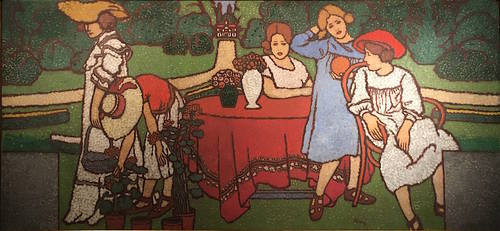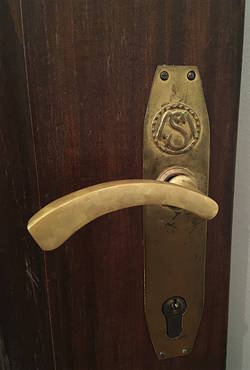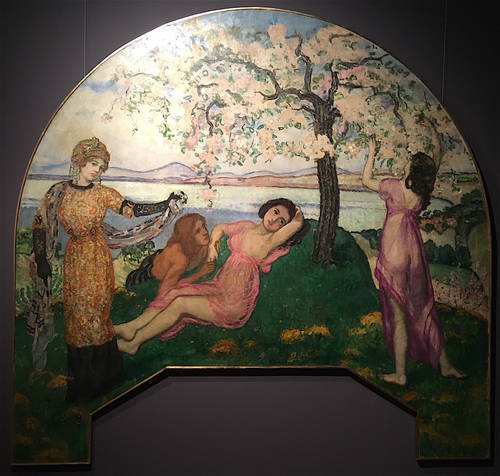On one of the leafy residential streets opening off Andrássy út, the great 19th-century radial boulevard of downtown Budapest, stands the Schiffer Villa, slightly ponderous and ungainly from the outside, but an extraordinary treasure trove within. Since the 1990s it has been the headquarters of the Hungarian Customs and Tax Authority: not in itself a great draw, perhaps, but they have laid out a museum on the subject on the first and second floors and access is free of charge.

The house, in a late Secessionist style, was built in 1910–12 by József Vágó for the wealthy railway magnate and patron of the arts Miksa Schiffer, who lived here with his wife and four daughters. Vágó designed both the exterior (inspired by Josef Hoffmann’s Palais Stoclet in Brussels) and the interior furnishings; the result is a Gesamtkunstwerk in the manner of the Wiener Werkstätte.

Beautiful stained glass with a repeated pattern of swallows allows light to filter into the entrance lobby. From here, you go up steps into the main hall, the centrepiece of the villa. At the top of the steps is a statue of a seated male nude, part of the original furnishings. There was formerly a marble fountain in the middle of the floor (bronze statuettes belonging to it are now in the Hungarian National Gallery). To the right, between the doors (which are inlaid with beautiful wood and mother-of-pearl marquetry), is a Carrara marble jardinière borne on stout yellow columns and decorated with carved reliefs of male and female nudes. The walls are clad in deep green Zsolnay tiles picked out with red studs in imitation of rivets. A tall window completely fills the left wall, its stained-glass panels (reproductions) designed by Károly Kernstok and showing women and children in a pastoral, Elysian setting. The aim of the villa’s entire design was to show how art can lift mankind heavenwards.

There is lovely stained glass in all the rooms on the main floor, much of it continuing the theme of bird life. Some of the door handles still bear Miksa Schiffer’s ‘SM’ monogram. Archive photographs show the villa as it appeared in Schiffer’s day. The large painting that hung in the study, Summer by Béla Iványi Grünwald, and another that hung in the main salon, a famous work by József Rippl-Rónai showing Mrs Schiffer and her daughters in the garden of their summer villa, are both now in the Hungarian National Gallery.

Wooden stairs lead up to a gallery overlooking the main hall. In Mrs Schiffer’s former bedroom, above where her bed once stood, hangs a copy of István Csók’s Spring, which features girls in diaphanous pink gowns under a blossom-laden cherry tree. The original has survived and hangs in the National Gallery. Csók, a lover of bright colour, had studied in Paris, as indeed had all the artists whose work is featured here. Csók was influenced mainly by the Impressionists, Kernstok by the Fauves, Rippl-Rónai by the Nabis (in fact he was one of their number, le nabi hongrois). Iványi Grünwald, who had gone to Paris together with Csók, went on to become a founder member of Hungary’s Nagybánya school of plein-air painting, in 1896.
The customs and excise and tax-collection exhibits (captions also in English) are interesting and include material on smuggling and its detection. One curiosity among the confiscated items is a bottle of an unidentified spirit in which floats a huge cobra with a scorpion in its mouth.







